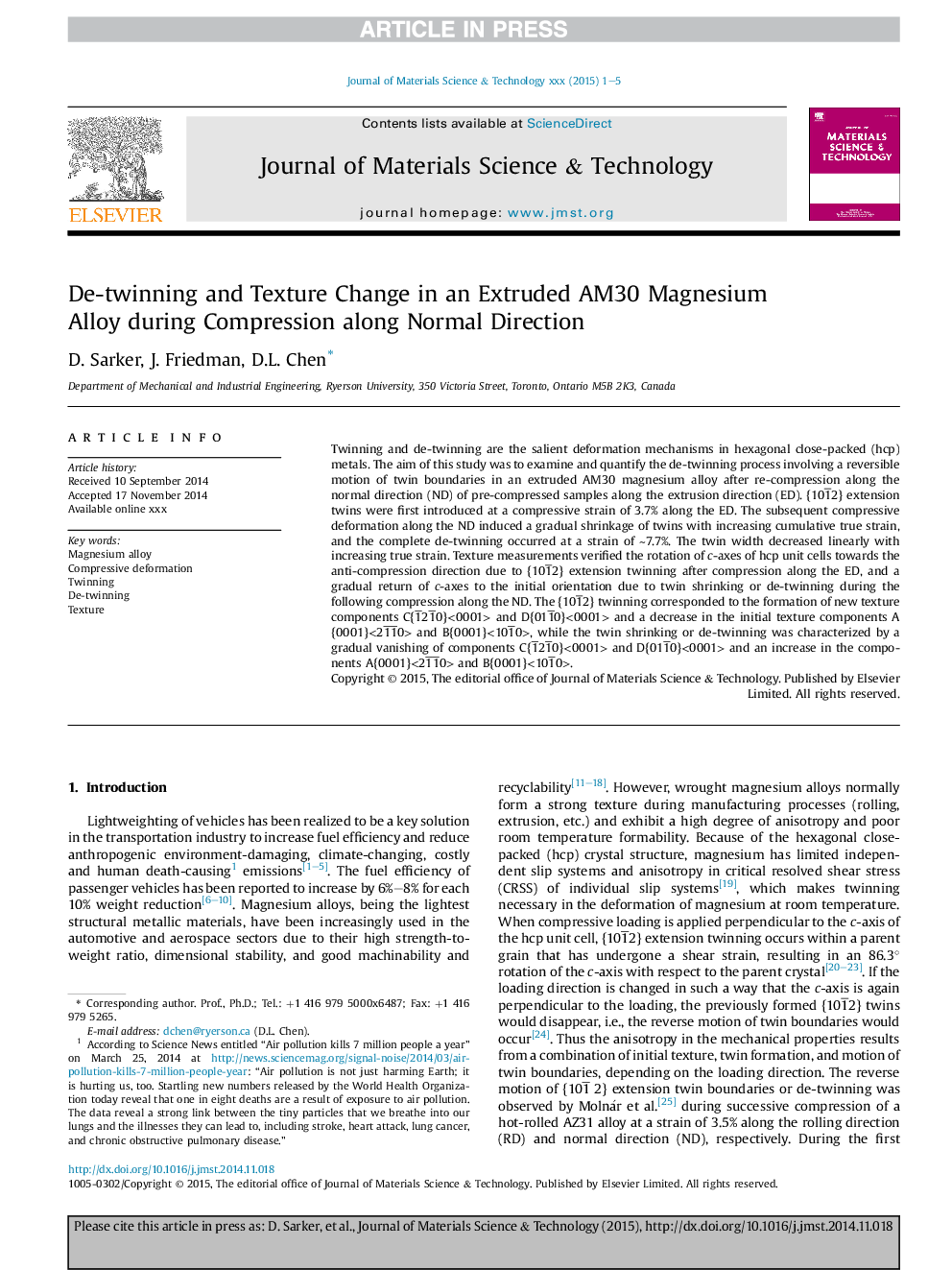| Article ID | Journal | Published Year | Pages | File Type |
|---|---|---|---|---|
| 1556042 | Journal of Materials Science & Technology | 2015 | 5 Pages |
Abstract
Twinning and de-twinning are the salient deformation mechanisms in hexagonal close-packed (hcp) metals. The aim of this study was to examine and quantify the de-twinning process involving a reversible motion of twin boundaries in an extruded AM30 magnesium alloy after re-compression along the normal direction (ND) of pre-compressed samples along the extrusion direction (ED). {101¯2} extension twins were first introduced at a compressive strain of 3.7% along the ED. The subsequent compressive deformation along the ND induced a gradual shrinkage of twins with increasing cumulative true strain, and the complete de-twinning occurred at a strain of â¼7.7%. The twin width decreased linearly with increasing true strain. Texture measurements verified the rotation of c-axes of hcp unit cells towards the anti-compression direction due to {101¯2} extension twinning after compression along the ED, and a gradual return of c-axes to the initial orientation due to twin shrinking or de-twinning during the following compression along the ND. The {101¯2} twinning corresponded to the formation of new texture components C{1¯21¯0}<0001> and D{011¯0}<0001> and a decrease in the initial texture components A{0001}<21¯1¯0> and B{0001}<101¯0>, while the twin shrinking or de-twinning was characterized by a gradual vanishing of components C{1¯21¯0}<0001> and D{011¯0}<0001> and an increase in the components A{0001}<21¯1¯0> and B{0001}<101¯0>.
Related Topics
Physical Sciences and Engineering
Materials Science
Materials Chemistry
Authors
D. Sarker, J. Friedman, D.L. Chen,
